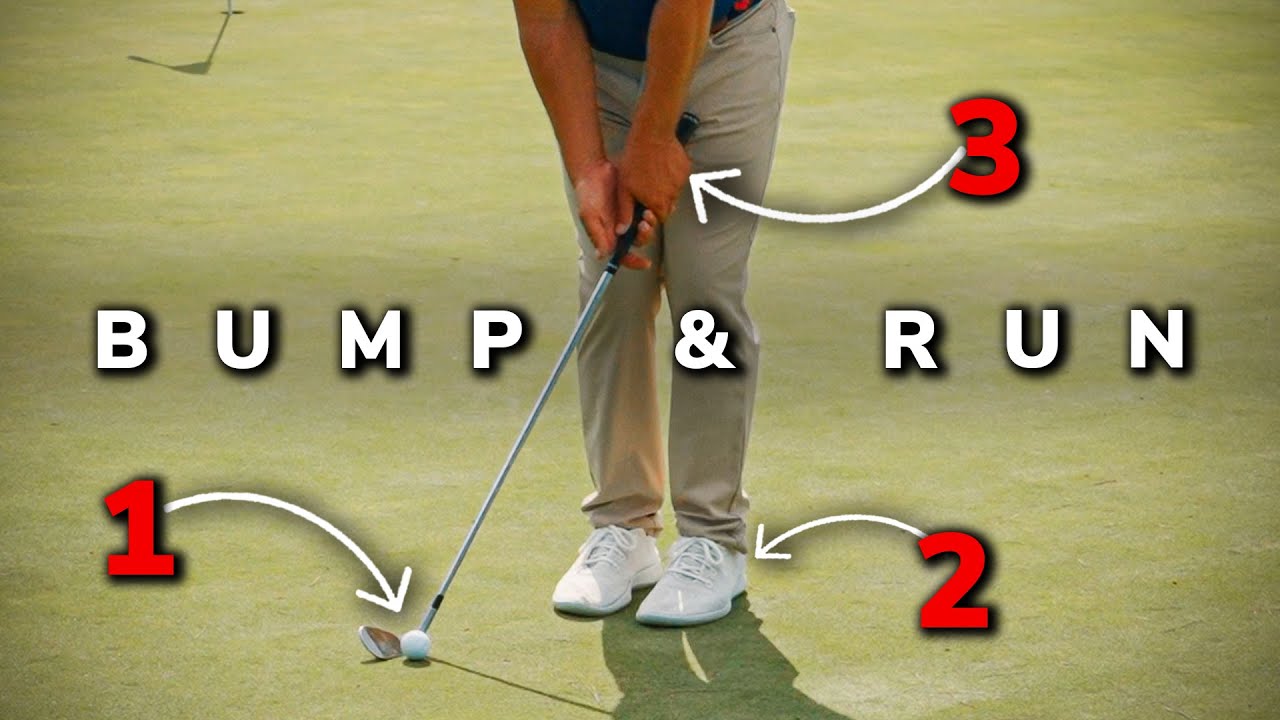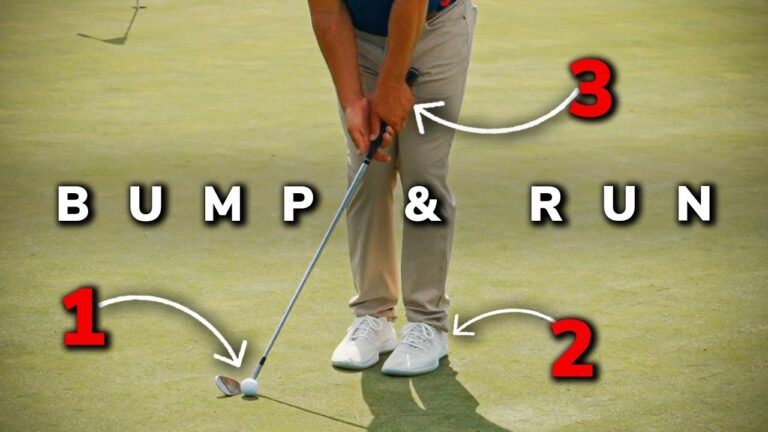
Unlock the precision of the bump and run shot, a golfer’s secret weapon for low trajectory and roll control. With reliable technique and practical drills, elevate your short game to new heights on any course.
The bump and run shot is perfect when you need the ball to hit the ground fast and roll toward the target. It’s a staple for golfers seeking reliability and precision. The distinction between a failed chip and a successful bump and run largely depends on setup and executing key sensations during the stroke. This guide breaks down practical steps to master the shot, whether you’re on the range or the course.
Step-by-Step Guide to the Perfect Bump and Run Shot
This guide will take you through everything, including setup, swing habits, and drills. Focus initially on setup, then integrate small swing habits for a forward angle of attack and crisp contact.
1. Understand the Objective
The aim of the bump and run is not to loft the ball but to ensure a swift, low flight leading to a roll that reaches the hole. Focus on hitting the ball first, with minimal turf contact. Achieve this by positioning your setup to allow a forward shaft lean.
2. Set the Ball Position
- Position: Slightly back of center relative to the sternum encouraging a forward shaft lean for a crisp contact.
- Rationale: Placement back discourages hitting behind or scooping the ball, helping with a clean, rolling contact.
3. Align Sternum and Hands
“Stand to the handle” by aligning your sternum and hands. This technique encourages a forward shaft lean, allowing the club to naturally drop into the ball with a descending path.
4. Weight, Stance, and Posture
- Narrow Stance: Feet closer for stability.
- Weight Forward: Shift to your front foot for a forward swing low point.
- Forward Posture: Slight tilt forward favoring the left shoulder, especially on slopes.
“Stand to the handle” is not just about the position but maintaining consistency in your approach to each shot.
5. Create Forward Shaft Lean
Hands should be a few inches in front of the club butt at address. This setup stabilizes the club face, securing a descending impact, crucial for rolling rather than lofting the ball.
6. Connection and Pressure Points
- Armpits Clamped: Ensures connected rotation.
- Triceps to Pecs: Maintain close elbow alignment to stabilize the swing.
7. Handle Slopes and Uneven Lies
For s lop es, align your shoulders parallel to the slope and adjust ball placement accordingly. Ensure your swing is adapted to the terrain, maintaining a descending angle.
8. Practical Drills
- Club-Hang Drill: Hang the club from your sternum, ensuring the ball is correctly positioned for natural setup alignment.
- Hands-Ahead Drill: Focus on forward shaft lean through impact.
- Feet-Together Drill: Narrow stance focusing on hitting down for consistent contact.
- Reverse-Grip Drill: Flip the club for a secure understanding of the descending angle without head interference.
9. Common Mistakes and Fixes
- Neutral Ball Placement: Shift back to avoid scoop and chunk shots.
- Trailing Hands: Focus on getting hands forward, ahead of impact.
- Disconnected Arms: Use pressure points to keep elbows close and ensure a controlled swing.
10. Dial Distance Control
- Stroke Length: Use your chest rotation for shorter swings.
- Club Choice: Select based on the green’s condition and desired roll length.
- Practice Landing Spots: Visualize and practice landing zones for improved accuracy.
Final Checklist
- Ball Position: Back of center, aligned with sternum.
- Stand to the Handle: Hands forward of the club butt.
- Stance: Narrow and compact.
- Connection: Keep arms connected to the body.
- Attack: Maintain forward shaft lean for optimal roll.
Master the bump and run with discipline in setup and shot execution. Transform it into an automatic part of your game, a reliable approach for every short game challenge.
FAQs
How should I place the ball for the bump and run shot? It should be back of your center, aligned with your sternum.
Why is ‘standing to the handle’ crucial? It helps align hands and sternum, ensuring a stable, descending strike.
What’s the ideal weight distribution for a bump and run? Most weight should be on the front foot to promote clean contact.
How can I prevent scooping? Ensure your hands lead the shot, keeping arms tight to the body.
Which club is best for this technique? Clubs with less loft are preferable, although selection depends on conditions and personal preference.


0 Comments